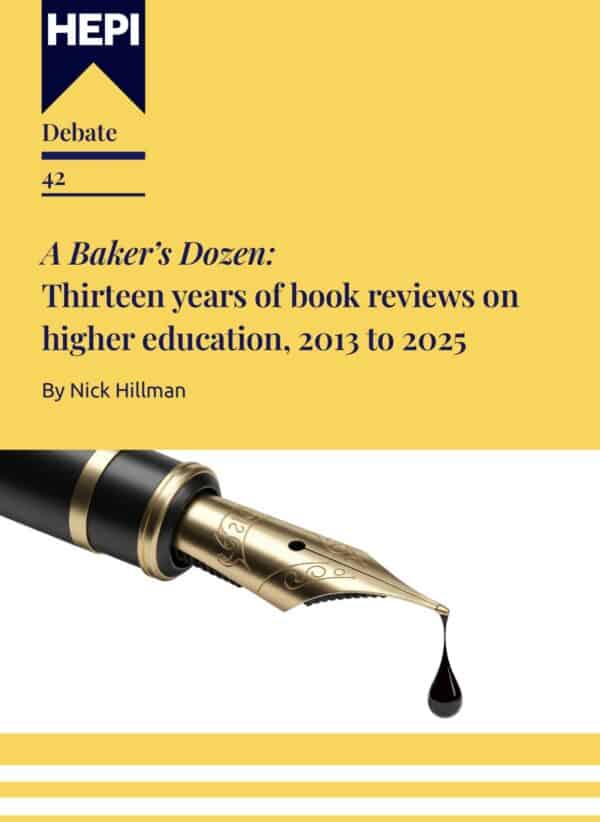The Critical Role of University Leaders in Shaping Safer Cultures and Meeting OfS Condition E6 on Harassment and Sexual Misconduct
By Professor Susan Lea, previous Vice Chancellor and Managing Director, Sagewood Consulting and Stephanie Reardon, Chief Executive Officer, LimeCulture CIC
Harassment and sexual misconduct have no place on our university campuses, nor in wider society. Yet, both continue to be pervasive. The Office for National Statistics reports that 1 in 10 people aged 16 years and over experienced at least one form of harassment in the previous 12 months, while the Crime Survey for England and Wales reveals that “an estimated 7.9 million (16.6%) adults aged 16 years and over had experienced sexual assault since the age of 16 years”. The adverse sequelae for victims/survivors are well documented.
The Office for Students (OfS), noting the absence of national-level data at higher education institutions (HEIs), piloted the design and delivery of a national sexual misconduct prevalence survey in 2023 (full survey due to be reported in September 2025). The study, involving 12 volunteering institutions, found 20% of participating students experienced sexual harassment and 9% experienced sexual assault/violence. The 4% response rate requires cautious interpretation of the findings; however, they are in line with other studies.
Over the last decade, universities have taken these matters more seriously, appreciating both the impact on victims/survivors and on their institution’s culture and reputation. In 2016, Universities UK and Pinsent Mason published guidance (updated in 2022) for HEIs on managing student misconduct, including sexual misconduct and that which may constitute a crime. As of 1 August 2025, the OfS has sought to strengthen universities’ actions through introducing condition E6 to ensure institutions enact robust, responsive policies to address harassment and sexual misconduct, as well as promote a proactive, preventative culture. Our experience, however, suggests that universities’ preparedness is varied, and the deadline is not far away.
Culture Starts at the Top
Organisational culture is shaped significantly by those at the top. At its heart is ‘the way things are done around here’: the established, normative patterns of behaviour and interaction that have come to be. Senior leaders have the power to challenge and change entrenched patterns of behaviour or to reinforce them. Thus, compliance with Condition E6 is just a starting point; herein lies an opportunity for university leaders to lean deeper into transforming institutional culture to the benefit of all.
Understandably, times of significant financial challenge may cause executive teams to quail at more demand on limited resource. This can precipitate a light-touch, bare minimum and additive approach; that is, devolving almost exclusive responsibility to a university directorate to work out how to do even more with less. Yet, the manifold benefits of inclusive cultures are well established, including improved performance and productivity and lower rates of harassment and sexual violence. Leadership attention to and engagement in building a positive culture will see wider improvements follow. Moreover, hard though it is to write this, we know from our own work in the sector that some leaders or teams are not modelling the ‘right’ behaviour.
Ultimately, the imperative to transform culture is in the best interests of the institution although it should also manifest a desire for social justice. Consequently, university governors need to understand and have oversight of the imperative; though narrowly defined as regulatory, it should be strategically defined as the route to creating a happier, healthier and more productive community likely to generate the outputs and outcomes the governing authority seek for a successful and sustainable institution.
Creating Safer Cultures
We use the term ‘safer culture’ to refer to a holistic organisational environment that is intolerant of harassment, discrimination, and mistreatment in any form. Underpinning the sustainable development of a safer culture are eight key pillars:
- Leadership Commitment, Governance and Accountability
Senior leaders and university governors need to visibly and actively promote an inclusive and respectful culture, holding themselves – and others – accountable. Strategic allocation of resources and institutional infrastructure needs to support cultural change, and governance mechanisms must enable assurance against objectives. A whole-institution approach is required to avoid commitments becoming initiative-based, siloed, inconsistent, or symbolic: the responsibility should be shared and collective. - Clear Policies, Procedures and Systems
Institutions need to develop accessible policies that define inappropriate behaviour, including harassment and sexual misconduct, and outline clear consequences for non-adherence. Associated procedures and systems should support effective prevention and response measures. - Training and Development
A tiered training approach should be adopted to embed shared understanding, develop capability and confidence, raise awareness, and foster appropriate levels of accountability across the organisation: among students and staff, including the executive team and governing body. Specialist skills training for those in frontline and support roles is essential. - Reporting Processes
Simple, reliable, confidential, and trusted reporting mechanisms are required. These must protect against retaliation, the need to repeat disclosure information unnecessarily, and provide swift access to appropriate support through a minimum of touchpoints. - Provision of Support
A trauma-informed, empathetic environment is crucial to ensure individuals feel safe and supported, whether they are disclosing misconduct or have been accused of such. User-focused support systems and wellbeing services need to be in place for all members of the university’s community. - Investigation and Resolution
Fair, timely, and impartial processes are required which uphold the rights of all parties and enforce meaningful consequences when misconduct is confirmed. Those involved must be appropriately trained and supported to ensure just outcomes for all. - Risk Management
Risk should be proactively identified and appropriately managed. Individuals throughout the organisation need to understand their responsibility in relation to risk, both individual and institutional. - Investigation and Resolution
Creating a safer culture requires regular evaluation through policy review, data analysis and reporting, including staff and student feedback. This is essential to address emerging issues, enhance interventions in line with changing policy and practice, and achieve cultural maturity.
A Leadership Imperative
The imminent introduction of condition E6 offers university leaders an opportunity to bring renewed and purposeful focus to developing an institutional culture that is safe, respectful and high achieving – the very foundation of academic excellence, creativity and innovation. At a time when equity, diversity and inclusion are under threat worldwide, including in the UK, the imperative has never been greater.







Comments
Add comment